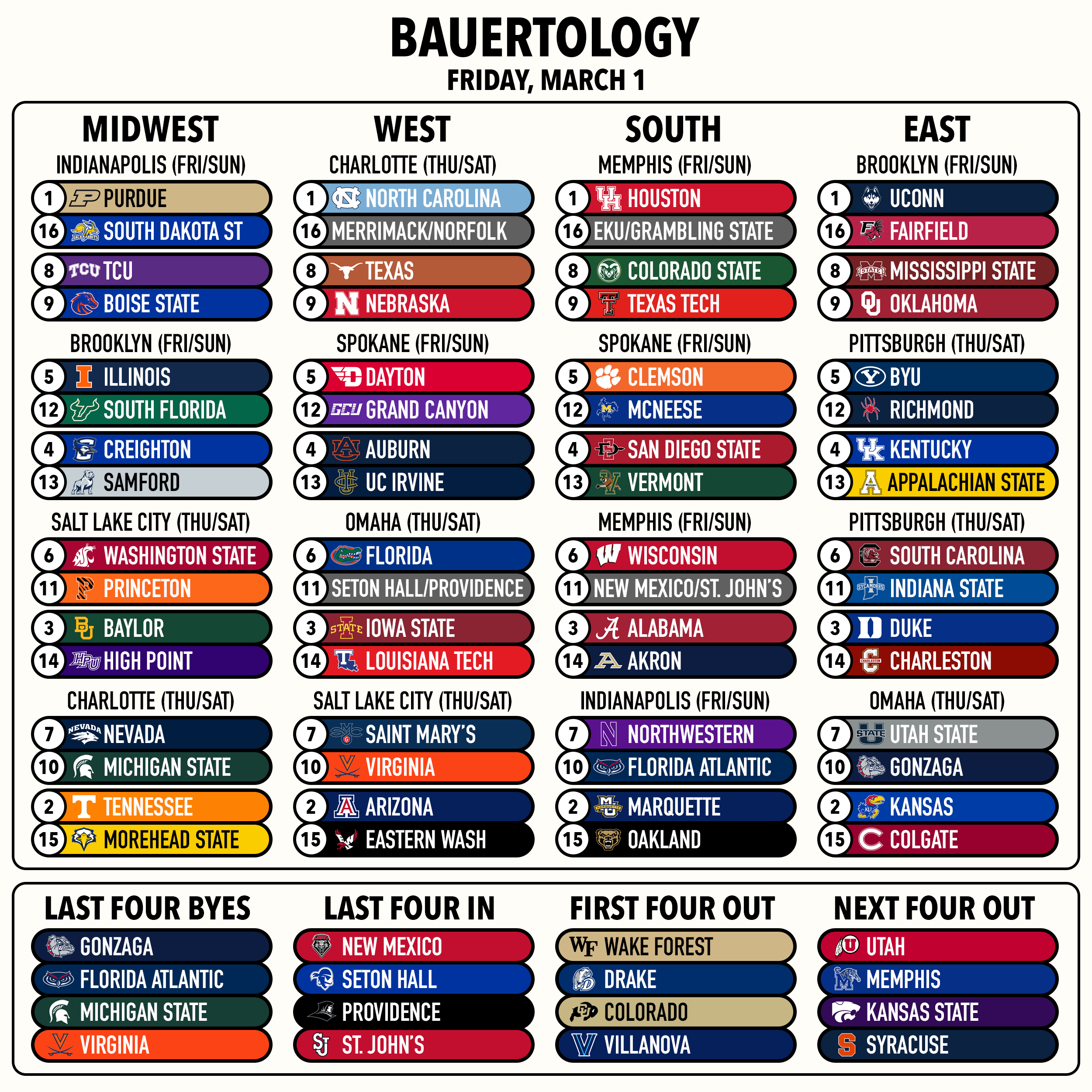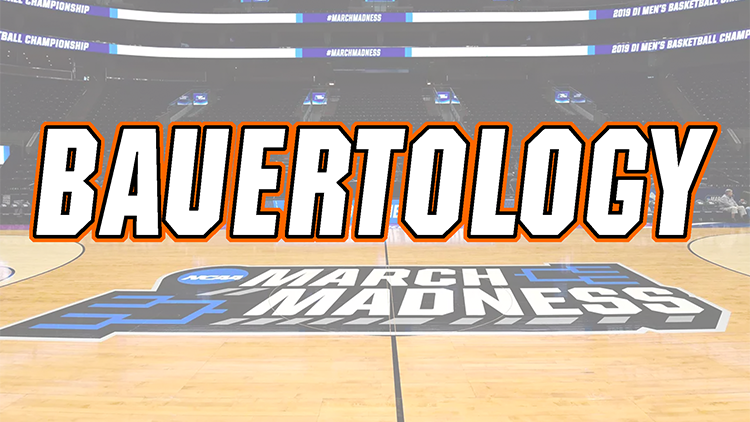Well, hello, March. Funny seeing you here.
The calendar has now crossed over to the single greatest month of the year, where the unordinary becomes ordinary, drama and excitement are abound, and the anticipation for every waking moment is so thick that you can cut it with a knife.
It’s finally the most thrilling time of year. So let’s celebrate at Bauertology by looking at selection and bracketing principles! (Woohoo! How fun!)
…Wait, don’t close the webpage. Please!
OK, so maybe selection and bracketing principles aren’t the most enticing thing in the whole world, but I think they’re worth going over for the sake of education, and for the sake of explaining how some of the rather juicy matchups found in my projection below came to be.
For those wondering how the selection committee goes about its official decision-making process when it comes to slotting teams into the field and their eventual seed/location, here are the NCAA official 2023-24 principles and procedures themselves. Study up!
Those with an astute set of eyes may notice that I have Houston and Texas Tech, both of the Big 12, in the same pod. Normally, this is disallowed; the committee will avoid putting teams from the same conference in the same pod whenever possible. But there is an exception—teams from the same conference can be in the same pod, hypothetically meeting as early as the Round of 32, if they only played each other once across the regular season and conference tournament. (We’ve seen this exact exception in action once before back in 2019, when 2 seed Michigan State and 10 seed Minnesota were placed in the same pod.)
This is an example where we would have to invoke that exception, as there are five Big 12 teams (#1 Houston, #8 TCU, #8 Texas, #9 Texas Tech, #9 Oklahoma) across the four 1/16/8/9 pods. So, because Houston and Texas Tech have only played once this year, we can put those two in the same pod—though we’d have to find Texas Tech a different home if the two teams were to meet down the line in the Big 12 tournament. If all four of TCU, Texas, Texas Tech, and Oklahoma were to have played Houston twice this season, then we’d have to something extreme by moving a team up or down from its seed line. But, thankfully, we don’t have to invoke that here.
A much more obvious observation would be that the First Four is exploding with Big East teams, as Seton Hall, Providence, and St. John’s all occupy three of the final four at-large spots. We’ve never had more than two teams from the same conference in the First Four, with that scenario happening twice (Indiana and Rutgers in 2022, UCLA and Arizona State in 2018). When that happens, it’s as simple as preventing the two conference opponents from pairing up in Dayton. But what about when you have three?
Well, first, we can confirm that the committee would indeed keep all three of Seton Hall, Providence, and St. John’s in the First Four. They would not consider moving a different team into the field or dropping a team above the First Four down into it just to prevent conference rematches (which is how it should be). So, if we did indeed end up with three teams from the same conference in the First Four, the selection committee would try to pair up the two teams that have met the fewest teams across the season; i.e. if Team A and Team B only played each other once beforehand but both played Team C twice, then Team A and Team B would be paired up in Dayton. But that doesn’t apply here, as all Big East teams play each other twice across the regular season. So what do we do?
Well, as it turns out, the time that you play your opponents is actually a deciding factor. According to the selection committee’s media coordinator David Worlock, resolving such a scenario would involve looking back and seeing when the teams in question played each other most recently. So that’s where we find our answer: St. John’s played each of Seton Hall and Providence in February, while the Pirates and Friars themselves haven’t met since Jan. 24. And thus, it’s settled: Seton Hall and Providence meet in the First Four, which just so happens to give us the juiciest of all juicy matchups in the other play-in game: St. John’s vs. New Mexico in the Pitino Bowl. Truly an example of the storylines writing themselves.
See? I told you that bracketing principles can be fun.
Now let’s let the real fun begun with the final couple weekends of regular season basketball upon us. Enjoy the Bauertology projection for Friday, March 1, and leave your comments and questions like always!


